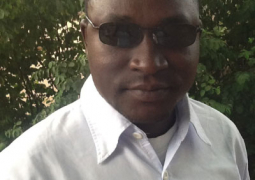The incident happened on 9th March, 2013 at Lamin Sanchaba Village in the Kombo North District of the West Coast Region.
Delivering his judgment, Justice Mikailu highlighted the testimonies of the prosecution witnesses before the court.
“I’m satisfied that the evidence led by the prosecution irresistibly makes the cause of death of the deceased referable to the serious injury caused to him by the convict,” he said.
“Therefore, I hold that the convict caused the death of the deceased with malice aforethought, and I find him guilty of murder,” the judge declared.
However, he noted that the ingredients of the offence of murder must be proven by the prosecution before a conviction could be secured.
Still in his judgement, the judge stated that the death of a human being had actually taken place; that such death was caused by the accused; that the act was done with the intention to cause death; or that the accused knew or had reason to know that death would be the probable consequence of his act; although the knowledge is accompanied by indifference whether death or grievous bodily harm was caused or not or by wish that it may not be caused; would result in acquittal.
He adduced that the prosecution must lead evidence to prove not only that the death of the deceased was caused by the accused, but that he did so with requisite intention or knowledge as defined in the criminal procedure code.
This, he said, was in discharging the burden placed on it by law, adding that the prosecution could prove the guilt of the accused, by confession of the accused which was considered as the best evidence in criminal trial, provided that such a confession was made voluntarily; or evidence of eyewitness of committing of the alleged crime; or circumstantial evidence, so long as the evidence was not only cogent, complete and unequivocal, but compellingly leads to the convict and no one else as the murderer; or by combination of all or any of the two above.
“It is beyond dispute that Mbemba Jallow was a human being and has actually died and that PW2 (one of the eye witnesses to the committing of the alleged crime) testified that Mbemba Jallow was her boyfriend and has died, and exhibit (C) is the autopsy report of post mortem examination conducted on the corpse of Mbemba Jallow,” said Justice Abdoulahi.
The judge further stated that it was a notorious fact that post mortem examination was only conducted on corpse and not the body of the living, adding that the autopsy report had established that Mbemba Jallow had died.
Justice Mikailu also said that in the convict’s voluntary statement, which was admitted in evidence, the convict admitted killing the deceased and, in addition, PW4 testified that he attended the post mortem examination and saw the remains of the deceased.
The prosecution had presented two sets of evidence; one direct evidence of eye-witnesses (PW2 and PW3), who saw the accused chopping the deceased with cutlass and two, extra judicial statement (exhibits A and B), which are confessional in nature, as well as exhibit (C), which attributed the cause of death to the injuries inflicted on the deceased by the accused, he stated.
He explained that in exhibit (B), which was tendered by the prosecution, the accused admitted killing the deceased with a cutlass, whilst in exhibit (A), the accused explained how he hacked the deceased with the said cutlass.
The judge added that the convict, in his testimony, confirmed how he axed or stabbed the deceased with a cutlass, which in his (the judge) view that the evidence led by the prosecution on this point had remained unchallenged throughout the trial.
Justice Abdoulahi said that in the instant case, the crux of the convict defence of provocation was that a month before, he lynched the deceased, he overheard his mother (PW2) and the deceased discussing how to kill him, but the convict kept this grudge for about a month before he attacked and chopped the neck of the deceased with a cutlass exhibit (D).
He said from the evidence on record, the defence of provocation could not avail the convict, because even if the alleged discussion overheard by the accused person were to be provocative, the period of one month was enough for the accused’s passion to cool down.
The trial judge also said that the law was well settled that defence of provocation was only available to a convict person, who did the killing in the heat of passion before their time to cool down.
He added that by the time he stabbed or chopped the victim with exhibit (D), he was acting with calculation and no longer in the heat of passion and, therefore, found no evidence of provocation or any other defence before the court, and the convict was entitled to none.
He revealed that by chopping the head and neck of the deceased with exhibit (D), the convict intended to cause the death of the deceased or grievous harm to him, and he indeed achieved that.
Exhibit (C), which was a report of the pathologist who examined the body of the deceased, indicated that the deceased sustained “deep cut wound” in the neck involving the blood vessels and muscle, the judge added.
“In the absence of evidence of novus actus intervenies (new act intervening) the pathologist/chief consultant isolated all other possible natural causes and conclusively attributed the death of the deceased to haemorrhage shock, due to the neck injury,” he stated.


